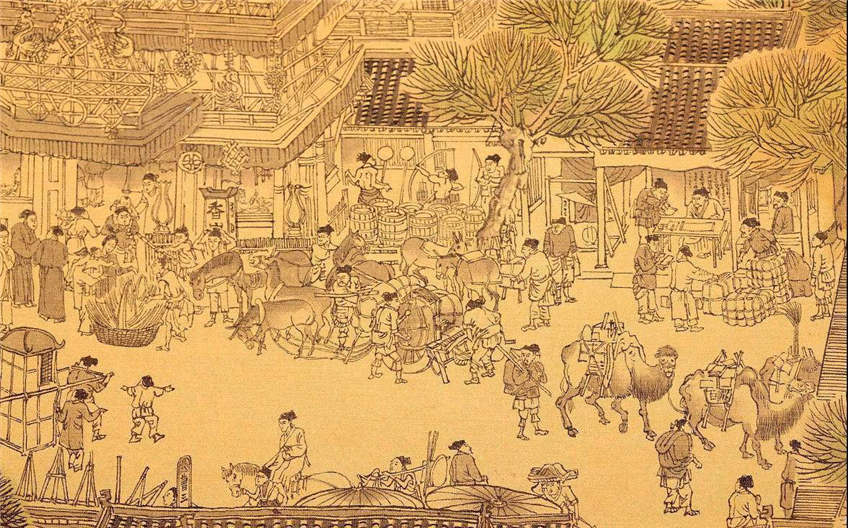Chinese Paintings
Traditional Chinese painting is highly regarded throughout the world for its theory, expression, and techniques. And it is also one of the oldest continuous artistic traditions in the world. Earliest paintings were ornamental, not representational; they consisted of pattern or designs, not pictures. Traditional Chinese painting is known in Chinese as guó huà (国画), meaning 'national' or 'native painting'.

Traditional Chinese painting is done with a brush dipped in black or colored ink. The most popular is that paintings are made of paper and silk. The finished work is then mounted on scrolls, which can be hung or rolled up. Traditional Chinese painting also is done in albums, on walls, and other media.
In its earliest stage, Chinese prehistoric paintings were closely related to other primitive crafts, such as pottery, bronzeware, carved jade and lacquer. The line patterns on unearthed pottery and bronzeware resemble ripples, fishing nets, teeth or frogs. The animal and human figures, succinct and vivid, are proofs to the innate sensitivity of the ancient artists and nature.
Traditional Chinese painting has its special materials and tools, consisting of brushes, ink and pigments, xuan paper, silk and various kinds of ink slabs. Chinese painting can be divided into various types based on different classification standards. Taking the subject for example. It can be classified as figure paintings, landscapes and flower-and-bird paintings. Landscapes represent a major category in traditional Chinese painting, mainly depicting the natural scenery of mountains and rivers.
In 1980s Chinese oil painting boomed. Then folk painting came into popular, such as, Chinese New Year pictures. It is pinned up on doors, room walls and windows during New Year to invite heavenly blessings and ward off disasters and evil spirits. Woodcuts have become increasingly diverse in style, theme and artistic form since the early 1980s.
Traditional Chinese painting, poetry, calligraphy, painting and seal engraving are necessary components that supplement and enrich one another. "Painting in poetry and poetry in painting" has been a criterion for excellent works. Inscriptions and seal impressions help explain the painter's ideas and sentiments and also add beauty to the painting.